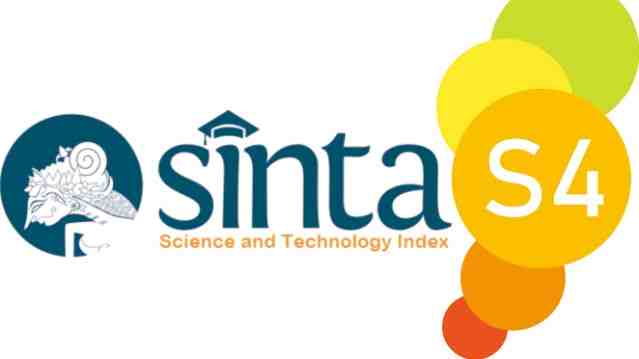DIVERSITAS SERANGGA TANAH DI BERBAGAI TIPE TANAH PADA LAHAN REKLAMASI BEKAS TAMBANG KAPUR KABUPATEN TUBAN
https://doi.org/10.25273/florea.v6i1.4367
Keywords:
Insect, Soil, Diversity, Quarry, ReclamationAbstract
The purpose of this study was to determine the diversity of soil insect orders in the reclamation area of former limestone quarries in the top soil type, spoil and reject product used in the media for land reclamation processes. This research sampling technique uses a pitfall trap tool. This study used descriptive quantitative data analysis using the Shannon-Wiener diversity index, Simpson dominance index, Pielou species evenness index, and index of Morisista-Horn habitat similarity. Based on the research that has been done it can be concluded that the reclamation land in 2010 with the dominant type of dust has a low diversity category and a high dominance category with the discovery of 4 orders. The reclaimed land in 2014 with the dominant clay type soil has a moderate diversity category and a low dominance category with 7 orders found. Whereas the reclamation land in 2016 with the dominant type of sand has a low diversity category and a high dominance category with the discovery of 8 orders. The spread of species in all three locations was categorized evenly and between locations did not have the same community.
Downloads
References
Agosti, D., J. D. Majer, L. E. Alonso and T. R. Schultz. 2000. Ants Standard Methods for Measuring and Monitoring Biodiversity. Washington and London: Smithsonian institution press.
Amir M. 2002. Kumbang Lembing Pemangsa Coccinellidae (Coccinallinae) di Indonesia. Bogor: Puslit Biologi LIPI.
Basna, M., Koneri, R., & Papu, A. (2017). Distribusi dan Diversitas Serangga Tanah di Taman Hutan Raya Gunung Tumpa Sulawesi Utara. Jurnal MIPA Unsrat Online, 6(1), 36–42.
Bolton, B. 2007. Synopsis and Classification of The Formicidae. Memoirs of The American Entomological Institute. Vol.71: 1-370
Borror, D. J., C. A.Triphelon and N. F. Johnson. 1992. An Introduction to The Study of Insects. Philadelphia: Saunders College Pub.
Cassis G, Gross GF. 1995. Zoological Catalogue of Autralia Hemiptera Heteroptera (Coleorrhyncha to Cimicomorpha). Australia: CSIRO.
Colles DH, Rentz DCF. 1985. A monograph of the Tettigoniidae of Ausralia Vol 1The Tettigoniinae. CSIRO (Commonwealth Sciencetific and Industrial Research Organization), Australia.
General, D. M. and G. D. Alpert. 2012. A Synoptic Review of The Ant Genera (Hymenoptera. Formicidae) of The Philippines. ZooKeys. 200: 1-111
Jha, A. K. And J. S. Singh. 1991. Spoil Characteristics and Vegetation Development of An Age Series of Mine Spoils in A Dry Tropical Environment. Vegetatio. Vol.97:63-76.
Krebs, C. J. 2014. Ecological Methodology. Vancouver: University of British Columbia.
Magurran, A. E. 2004. Ecological Diversity and Its Measurement. New Jersey: Princeton University Press.
Laub, C., R. R. Youngman, K. Love and T. Mize. 2009. Using Pitfall Trap to Monitor Insect Activity. Virginia: Virginia State University.
Odum, E. P. 1993. Dasar-Dasar Ekologi. Yogyakarta: Gadjah Mada University Press.
Septianella, G., Rosnaeni, Baskoro, Y., Nisrina, L., Qayyimah, F. D., Aulunia, R., Lupiyaningdiyah, P. (2015). Identifikasi serangga di kawasan industri pertambangan kapur Palimanan, Cirebon, Jawa Barat. In PROSSIDING SEMINAR NASIONAL MASYARAKAT BIODIVERSITAS INDONESIA (Vol. 1, pp. 1790–1794). https://doi.org/10.13057/psnmbi/m010807
Siriyah, S. L. (2016). Keanekaragaman dan Dominansi Jenis Semut (Formicidae) di Hutan Musim Taman Nasional Baluran Jawa Timur. Biota, 1(2), 85–90. https://doi.org/10.24002/biota.v1i2.995
Sugiharyanto dan N. Khotimah. Diktat Mata Kuliah Geografi Tanah. Yogyakarta: Univesitas Negeri Yogyakarta
Toda, M.J., Kitching, R.L. 2009. FOREST ECOSYSTEMS:the assessment of plant and animal biodiversity in forest ecosystems. Manual IBOY. Kyoto University Japan.
Yuniar, N., & Haneda, N. F. (2015). Keanekaragaman semut (Hymenoptera: Formicidae) pada empat tipe ekosistem yang berbeda di Jambi. PROSSIDING SEMINAR NASIONAL MASYARAKAT BIODIVERSITAS INDONESIA, 1(7), 1582–1585. https://doi.org/10.13057/psnmbi/m0107
Downloads
Published
Issue
Section
License
Every accepted manuscript should be accompanied by "Copyright Transfer Agreement" prior to the article publication.
Florea : Jurnal Biologi dan Pembelajarannya by http://e-journal.unipma.ac.id/index.php/JF is licensed under a Creative Commons Attribution-ShareAlike 4.0 International License.
Author who publish with this journal agree to the following terms:
- Author not hold and retain copyright and grant the journal of first publication with the work simultaneously licenced under Creative Commons Atribution Licence that allows others to share the work with an acknowledgment of the work's authorship and initial publication in this journal.
- Authors are able to enter into separate, additional contractual arrangements for the non-exclusive distribution of the journal's published version of the work with an acknowledgment of its initial publication in this journal.
- Authors are permitted and encouraged to post their work online prior to and during the submission process, as it can lead to productive exchanges, as well as earlier and greater citation of published work.










